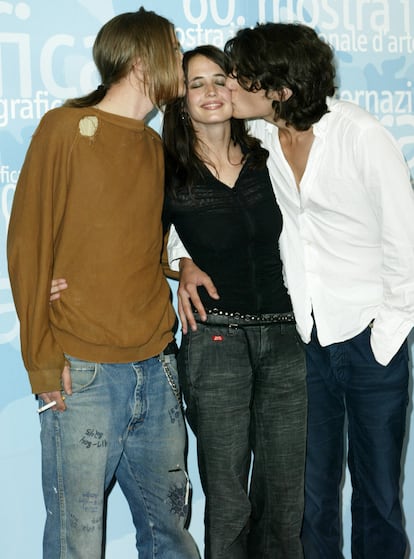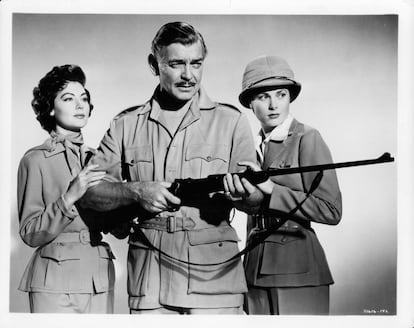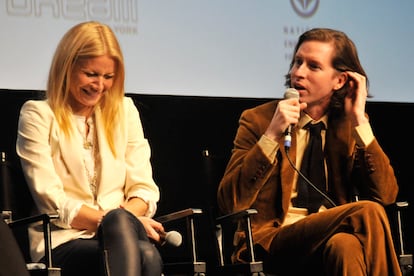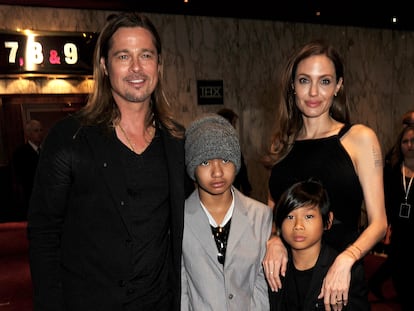From ‘House of the Dragon’ to ‘The Dreamers:’ How incest is portrayed in film and on television
The ‘Game of Thrones’ spinoff is the latest in a long line of shows and movies that resort to sex between family members to spice up the plot

House of the Dragon has brought us back to a Westeros that’s somewhat different from the one we saw over the course of eight seasons of Game of Thrones. There’s almost no nudity. Sex has been written out unless it is essential to the plot. The House of Velaryon has some of the diversity that Game of Thrones lacked, a necessary move given the public’s increasingly insistent calls for it. But the prequel, like the show that preceded it, continues to feature the uncomfortable element – some might even say taboo – of incest. Less than episodes into the show viewers saw the first sexual encounter between relatives, and it seems that trend will continue. Far from being shocked, many viewers expressed their support for the incestuous couple (to avoid spoilers, we won’t mention their names) on social media.
But the world of Westeros is far from the first time that film and television have romanticized consensual consanguineous relationships. The popular history of incest begins with the marriage between the god Zeus and his sister Hera, goes through Adam and Eve’s children in the Bible and ends with the last episode of the show Rick and Morty, in which the paterfamilias struggles to avoid a prophecy that he’s read in a fortune cookie, namely, that he’ll have sex with his own mother.
Luke and Leia, retroactive incest

The first draft of Episode V - The Empire Strikes Back, which screenwriter Leigh Brackett left behind when she died in 1978, attests to the fact that the story didn’t originally have the lovers as siblings. Brackett developed the story from an outline George Lucas had created, and the latter eventually turned to Lawrence Kasdan to finish the plot. There is much more to Brackett’s script than a kiss. Leia visits Luke in the infirmary and the two siblings are left alone “in a tender love scene.” The romantic arc was eliminated because of the script’s demands: the young Skywalker needed a sister and the princess was the only woman important enough in the plot. It was a perfect narrative solution; the only drawback was that the siblings had been flirting in the first two films.
The Dreamers, revolutionary incest

The Dreamers (2003) is one of Italian director Bernardo Bertolucci’s final films. The movie follows Isabelle (Eva Green), a young woman in love with cinema, revolution, and Théo (Louis Garrel), her twin brother. A young American (Michael Pitt) joins the two, and through Isabelle and Théo, he discovers the revolutionary atmosphere of May 1968 and French New Wave cinema.
The three youngsters barricade themselves in a Parisian apartment to talk about movies, discuss politics and, above all, have sex. In fact, Jake Gyllenhaal was Bertolucci’s first choice to play the role of the young American but ended up withdrawing from the project because he was disturbed by the amount of nudity in the script. The film drew comparisons with Last Tango in Paris, the work that forever stained the names of Bertolucci and Marlon Brando after the sexual abuse to which they subjected the late Maria Schneider during filming. The Dreamers was more fortunate; over the years, it has become a cult film that continues to gain new fans.
Enter the Void: Love beyond death

No one likes to delve into incest more than film director Gaspar Noé. Incestuous relationships are often some of the darkest aspects of his movies: a father who abuses his daughter (I Stand Alone, 1998), two brothers who lose their minds in a hellish LSD orgy (Climax, 2018), and a mother who no longer recognizes her son because she suffers from Alzheimer’s (Vortex, 2022). But in Enter the Void (2009), which is as dark as the rest of his filmography, the love between Oscar and Linda, two siblings who were separated when they were little, represents one of the film’s few bright spots.
Perhaps without being aware of it, the director of Irreversible was talking about Genetic Sexual Attraction (GSA), a phenomenon that describes the sexual attraction between family members who have been separated and meet again years later. There are few studies about this behavior, but it occurs in 50% of such cases. Just this year, a 44-year-old German man named Patrick Stuebing, who has four children with his 37-year-old sister Susan Karolewski – whom he did not meet until she was 20 – called for a change to the law that prohibits their incestuous relationship. In Germany, sex between siblings is illegal, and Stuebing believes that his jail sentence violates his rights.
‘Game of Thrones’: Inbreeding at court

If the Homeric epic of the Iliad starts with Helen’s abduction, the War of the Five Kings of Westeros begins when Bran, one of the Stark family’s youngest sons, discovers Cersei (Lena Headey) and Jamie Lannister (Nikolaj Coster-Waldau) in the throes of sexual intercourse. Game of Thrones has incestuous relationships to spare. For centuries, members of the Targaryen family only married among themselves to maintain the purity of their bloodlines, which supposedly allowed them to control their dragons. It was a web of madness and incest from which not even Jon Snow (Kit Harington) and Daenerys (Emilia Clarke) could escape.
During the Middle Ages, incest was considered both a crime and a sin; as such, it was harshly punished. Ecclesiastical jurists established the precise degrees of kinship that prevented marriage, although they sometimes turned a blind eye for members of the high nobility. In contrast, in ancient Egypt, especially during the XVIII Dynasty, it was common for pharaohs to marry their sisters, daughters or even granddaughters to preserve the purity of their bloodline.
Mogambo, uncensored incest

In 1970, the Franco regime set out to save Spain from the intolerable adultery depicted in the film Mogambo (1953). To do so, the regime’s officials decided to change the dialogue and eliminate scenes to make the anthropologist Donald Nordley (Donald Sinden) and his wife Linda (Grace Kelly) siblings, thereby paving the way for the latter’s relationship with the mature safari hunter Victor Marswell (Clark Gable). Unfortunately, Franco’s methods didn’t achieve the desired result: The censored version featured scenes in which the affection between Donald Nordley and Grace Kelly went well beyond family love. Of course, that caused a scandal. Eventually, the film was re-released four years later, again under the censors’ scrutiny. This time, the censored version didn’t depict incest; it included the original adultery.
The Royal Tenenbaums: Sex between step-siblings doesn’t count

Because they are not incestuous in the strict genetic sense, love stories featuring stepsiblings are less controversial. Such relations float in a moral ambiguity that almost never offends the viewer’s sensibilities but they do often drift into forbidden love. In Wes Anderson’s The Royal Tenenbaums (2001), Margot (Gwyneth Paltrow) and Richie (Luke Wilson) have grown up together in the same house, although she is adopted. Since he was a little boy, Richie has expressed his love for Margot through paintings, and he continues to love her until he is finally able to confess his feelings to her as an adult.
Tu suscripción se está usando en otro dispositivo
¿Quieres añadir otro usuario a tu suscripción?
Si continúas leyendo en este dispositivo, no se podrá leer en el otro.
FlechaTu suscripción se está usando en otro dispositivo y solo puedes acceder a EL PAÍS desde un dispositivo a la vez.
Si quieres compartir tu cuenta, cambia tu suscripción a la modalidad Premium, así podrás añadir otro usuario. Cada uno accederá con su propia cuenta de email, lo que os permitirá personalizar vuestra experiencia en EL PAÍS.
¿Tienes una suscripción de empresa? Accede aquí para contratar más cuentas.
En el caso de no saber quién está usando tu cuenta, te recomendamos cambiar tu contraseña aquí.
Si decides continuar compartiendo tu cuenta, este mensaje se mostrará en tu dispositivo y en el de la otra persona que está usando tu cuenta de forma indefinida, afectando a tu experiencia de lectura. Puedes consultar aquí los términos y condiciones de la suscripción digital.
More information
Últimas noticias
Maduro pleads not guilty before the federal court in New York: ‘I am still the president of Venezuela’
A new test can detect Alzheimer’s from a finger prick
UN team enters Sudanese city of El Fasher after paramilitary massacre: ‘It’s like a ghost town’
A recipe for resistance: Indigenous peoples politicize their struggles from the kitchen
Most viewed
- Gilles Lipovetsky: ‘If you want to live better and fall in love, take Prozac, don’t look to philosophy’
- Alain Aspect, Nobel laureate in physics: ‘Einstein was so smart that he would have had to recognize quantum entanglement’
- Alvin Hellerstein, a 92-year-old judge appointed by Bill Clinton, to preside over Maduro’s trial in New York
- Why oil has been at the center of Venezuela-US conflicts for decades
- Maduro’s downfall puts China’s relationship with Venezuela to the test











































